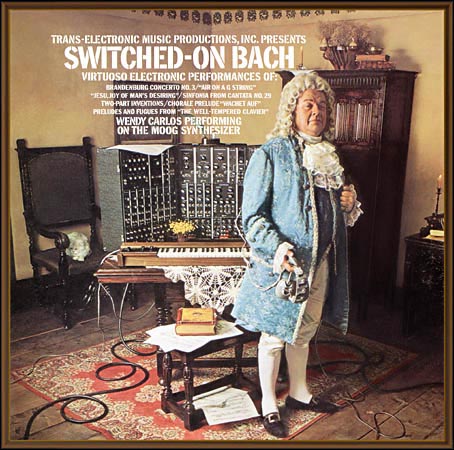
Robert Moog was born in 1934 in New York City. When he was a child, his mother encouraged him to study music, so he learned to play the piano. Meanwhile, he spent a great deal of time with his father as well, with whom he liked to tinker with electronics. By the time Moog had reached his teenage years, these two interests had converged and building simple novelty electronic musical instruments had become a hobby.
In 1949, Moog built his first theremin from the instructions he found in a magazine. He was fascinated with the theatrical and mysterious sounds the instrument, invented by Russian inventor Leon Theremin in the 1920s, could create. The theremin is played by waving your hands in the vicinity of two metal rods, controlling pitch and volume, that are attached to a nondescript wooden cabinet. It is very large and difficult to play, thus its popularity faded rather quickly.
Moog, however, maintained his interest in the theremin throughout his college years. After he received a BS in physics from Queens College and a BS in electrical engineering from Columbia University, Moog pursued a doctoral degree in engineering physics at Cornell University. While he was still a student, Moog founded the R.A. Moog Company as a part-time business to design and build electronic musical instruments. He also published an article for the January, 1961 issue of the magazine 'Electronics World.' After the issue was published, Moog sold 1,000 theremin kits out of his three-room apartment.
Eventually Moog began producing instruments of his own design. After toying with the idea of a portable guitar amplifier, Moog turned to the synthesizer. During a convention in 1963, Moog was introduced to the idea of building new circuits that would be capable of producing sound. In 1964 he was invited to exhibit his circuits at the Audio Engineering Society Convention. Shortly afterwards Moog completed his PhD and began to manufacture electronic music synthesizers, and it was not long before synthesizers went from being computers to instruments that could be found in any music store.
Moog designed his first synthesizers in collaboration with the composers Herbert A. Deutsch, and Walter Carlos. Significantly, Moog's was the first synthesizer to use attack-decay-sustain-release (ADSR) envelopes, set with four different knobs, which control the qualities of a sound's onset, intensity and fade. Like many of his designs, Moog's envelope generators became a basic component of later synthesizers. The sound was monophonic -- one note at a time -- but that was enough, since studio recording techniques could create whole orchestras from single notes by the late 1960s. Moog's synthesizer also boasted the voltage-controlled lowpass filter that came to be known as the Moog filter, capable of making a variety of full horn, string and vocal timbres. The filter was patented in 1968.
After the success of Carlos's album "Switched on Bach," entirely recorded using Moog synthesizers, Moog's instruments leapt into commercial popular music. In 1971, the name of his company was changed to Moog Music, Inc., and in 1973 the company became a division of Norlin Music, Inc. Moog served as president of Moog Music until 1977. The Micromoog was the last synthesizer created by Moog to bear his name. After Norlin took over his company, including synthesizer design, Moog spent the rest of his days at the company designing guitar effects and guitar amplifiers. He left Moog Music in 1977, blaming corporate politics for his departure.
Moog and his family moved from New York State to western North Carolina in 1978. There he founded Big Briar, Inc. for the purpose of designing and building novel electronic music equipment, especially new types of performance control devices. At the International Computer Music Conference in 1982, he introduced the multiple-touch-sensitive keyboard, developed with John Eaton of Indiana University. In addition to responding to the downward motion of a key, the keyboard also sensed the horizontal position of the finger playing it. From 1984 to 1988, Moog was a full-time consultant and Vice President of New Product Research for Kurzweil Music Systems.
Moog's awards include the Silver Medal of the Audio Engineering Society; the Trustee's Award of the National Academy of Recording Arts and Sciences; the Billboard Magazine Trendsetter's Award; and the SEAMUS award from the Society of Electroacoustic Music in the United States. Today Moog lives in Asheville, North Carolina where he continues to serve as president of Big Briar. The company is currently working on building theremins, MIDI interfaces, effects modules and electronic musical instrument kits. Moog's newest project is an "interactive piano" that uses a touch screen the size of a laptop to take the place of sheet music. The piano has 128 sounds, including a digitally sampled Steinway grand, and 256 tracks for recording.

Modular Moog Synthesizer 1967

Another Modular Moog Synthesizer

Moog Prodigy Synthesizer

Poly-Moog Synthesizer

Multi Moog Synthesizer

Moog 960 Analogue Sequencer




